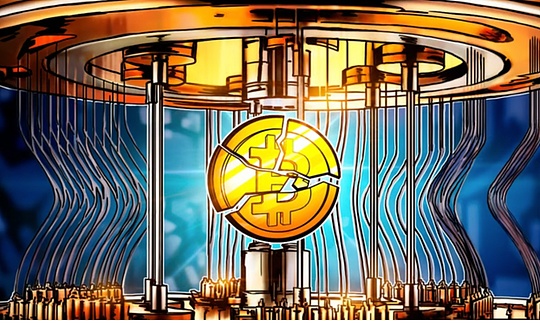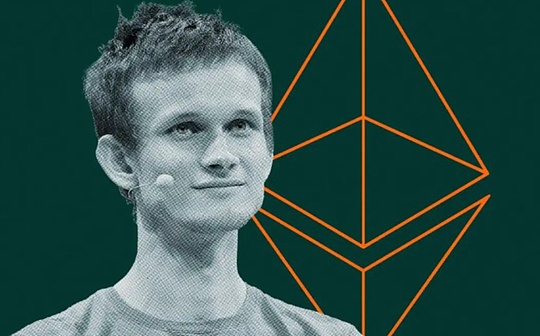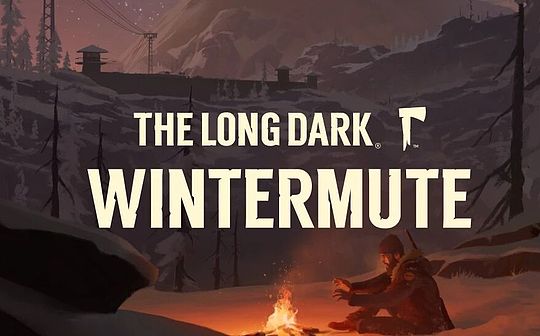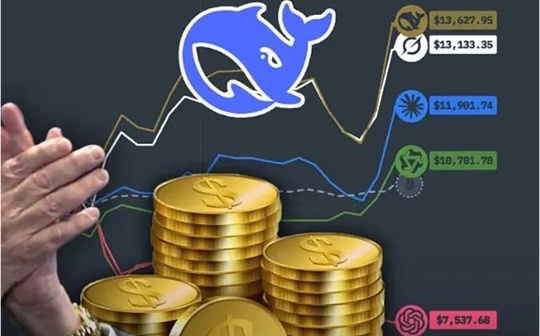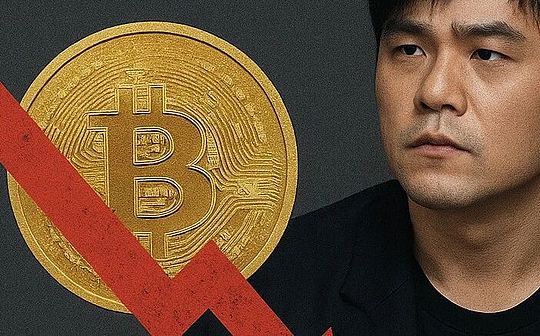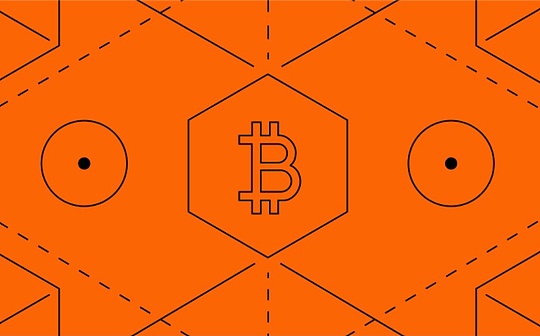
Author: Will Owens, research analyst at Galaxy Digital; Translation: Bitchain Vision xiaozou
With the emergence of digital asset treasury companies and the price of Bitcoin breaks through record highs, people have gradually forgotten the core value proposition of the Bitcoin network: a decentralized, censor-resistant monetary system designed to provide permissionless global value transfer.
Bitcoin’s on-chain usage has shrunk sharply since the recession of non-monetary activity of the Runes and Ordinals protocols at the end of 2024.Nowadays we see more and more “free” or nearly free blocks, which means that the average fee paid per virtual byte (the standard unit measuring the size of Bitcoin transactions) is only 1 Sasaki (one hundredth of a million bitcoin) or even lower.Although this has a short-term benefit to users who pursue cheap and fast transfers, it has added a burden to the mining economy, which has already been under the pressure of halving in 2024.
This article analyzes the Bitcoin fee market structure, evaluates the real dynamics on the chain and their impact on the health of the network economy, and examines the evolution of OP_RETURN transactions and their usage patterns.Given that the upcoming v30 version of Bitcoin core client has caused controversy – the open source software allows a single transaction to include larger capacity and more OP_RETURN output by default – the related analysis is particularly practical.Some members of the Bitcoin community are worried that the move will lead to a flood of spam transactions, and have raised sharp criticisms about the update plan.
Summary of this article
The pressure on Bitcoin fees has collapsed: since April 2024, the median daily fees have dropped by more than 80%; as of August 2025, about 15% of the daily blocks were “free blocks”.
OP_RETURN activities experienced surges and declines: During the peak period of Runes protocol adoption (Q2-Q3, 2024), OP_RETURN transactions often account for 40-60% of the daily trading volume; as of August 2025, this proportion has dropped to about 20%.
Memory pool activity is lacking: the proportion of non-full blocks has soared to nearly 50% many times in the past few months; after halving the block reward to 3.125 BTC in 2024, the silent memory pool may challenge the long-term sustainability of miner income.
On-chain activity may be replaced by alternatives: Spot Bitcoin ETF currently holds about 1.3 million BTC, most of which have not undergone substantial on-chain transfers; trading and speculation are shifting to alternative Layer1 such as Solana, especially in use cases such as Meme and NFT.
More than 1.5 million BTCs are still stored in traditional P2PK addresses: This type of naked public key address is considered to be extremely vulnerable to potential quantum computer attacks because the public keys are always exposed to the chain.
More than 6 million BTCs are still stored in traditional P2PKH addresses.
The P2WPKH address format currently holds the largest share of unspent BTC.
1,method
All the on-chain data in this article comes from Galaxy’s internal Bitcoin infrastructure, including our own full nodes.Unless otherwise specified, the statistics reflect the status of the Bitcoin network as of August 12.
Processing fee indicators: Use block-level data to calculate, including the average/median handling fee, the proportion of “free blocks” (blocks with average handling fee ≤1 Satoshi/virtual bytes), and the proportion of non-full blocks.In this study, we define blocks with a total block weight below 3.9 million units of weight (with the maximum of 4 million) as non-full blocks.
OP_RETURNanalyze: Identify transactions containing the OP_RETURN opcode by analyzing transaction data.The proportion of daily OP_RETURN transactions is expressed as the percentage of the total transaction volume of this type of transaction on that day.
Address format classification: Classify unspent outputs by script type (such as P2PKH, P2PK, P2SH, P2TR, P2WPKH).The total balance is counted as of August 12.
2, current situation of handling fees market
The Bitcoin fee market—the mechanism by which users can include transactions into the next block through bidding—has entered a stagnation period.Although almost all Bitcoin transactions come with a handling fee, users can choose the payment amount independently, and transactions that pay higher handling fees are usually confirmed faster.The current pressure on network fees has shrunk sharply after months of network congestion caused by Bitcoin homogeneity/non-fungible tokens (Runes and Ordinals, respectively).The average daily transaction fee has dropped to its lowest level since early 2023.
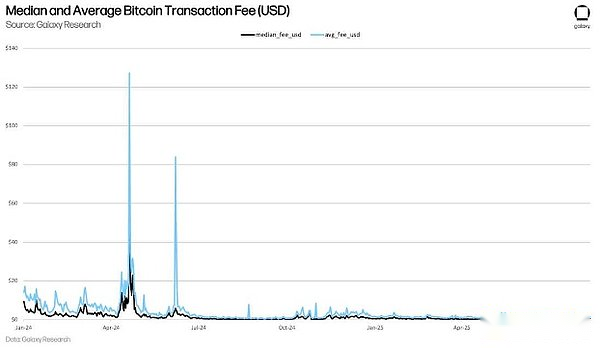
Although the average handling fee and median handling fee can effectively summarize market trends, it cannot reflect the overall picture.The figure below presents data in a more refined dimension: the daily transaction fee percentage counted by the virtual byte unit price (Saki/vB).
The chart covers the time span from January 2023 to the present, showing the handling fee levels of the 10th, 25th, 50th (median), 75th and 90th percentile, respectively.This perspective not only reflects the median change, but also fully presents the evolutionary trajectory of memory pool fee pressure, clearly revealing the sharp narrowing of the difference in fee since the end of 2024.
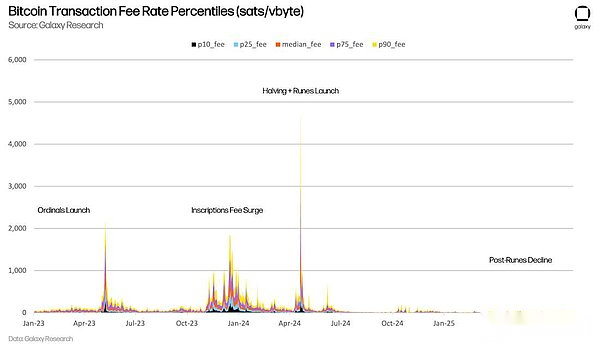
The most intuitive manifestation of this trend is the surge in the number of “free blocks” we define (blocks with an average handling fee of ≤1 Satoshi/vB).Such blocks almost never existed in 2024, but are becoming increasingly common today.As of the time of writing this article, free blocks have occupied a significant proportion of daily blocks, fully confirming the collapse of the intensity of competition in block space.
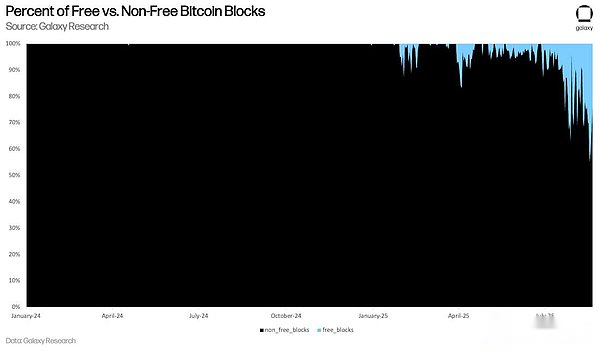
At the same time, the proportion of “non-full blocks” remains high.Although these blocks still have room to accommodate more transactions, they failed to reach the upper limit of 4 million units of weight.In short, Bitcoin’s memory pool (i.e., the waiting area for pending transactions) is often vacant; even when it is not empty, the pool is filled with transactions that can be processed quickly without paying high fees.
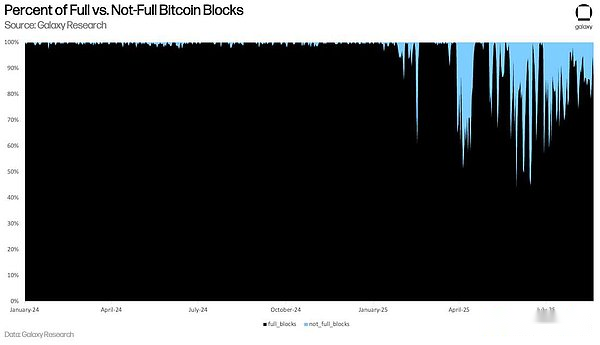
For miners, this phenomenon is worrying.The halving in 2024 has reduced the rewards for each block to 3.125 BTC. It was originally expected that transaction fees would play a more important role in miners’ income, but the reality is that fee income is exhausted.The long-term economic model of Bitcoin cybersecurity relies on a healthy fee market, and the current market conditions are far from “health”.
The rise of managed solutions and “bitcoin paper wallet” products, whether ETFs or other institutional derivatives, may be suppressing on-chain activity.Meanwhile, meme currency traders are accelerating their migration to faster and cheaper Layer1s like Solana—when Solana’s meme currency trading experience is already so smooth, it’s obvious that enduring the poor user experience of Runes protocol is not worth it.
3,OP_RETURNOperation code
The Bitcoin OP_RETURN opcode was launched in 2014 and allows users to embed arbitrary data of up to 80 bytes in transaction output.Such outputs are verifiable and generally do not carry any BTC value, thus not increasing the unspent transaction output (UTXO) set size.UTXO is a discrete bitcoin unit that wallets can be used for future transactions, forming the cornerstone of the Bitcoin accounting system – each transaction consumes existing outputs and generates new outputs.If BTC is sent to OP_RETURN output, these coins will be permanently locked, but in exchange for a new use case: permanently storing information or metadata on the blockchain.
The script type usage has surged in the past 18 months.During the launch of the Runes protocol in April 2024 (block height is 840,000, which coincides with the latest halving of miners’ block rewards), OP_RETURN transaction volume set a historical record.As shown in the figure below, these non-monetary transactions once dominated the block space during their peak periods.
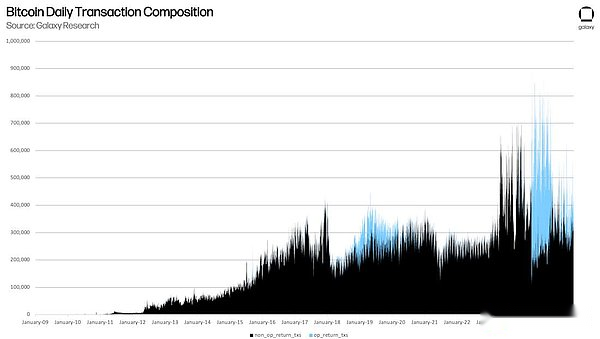
As Runes activity cools down, the current usage of OP_RETURN has gradually declined.But developers and institutions continue to use their on-chain anchor data.For example, a few weeks ago, Galaxy broadcast a historic customer transaction of 80,000 BTC through OP_RETURN.
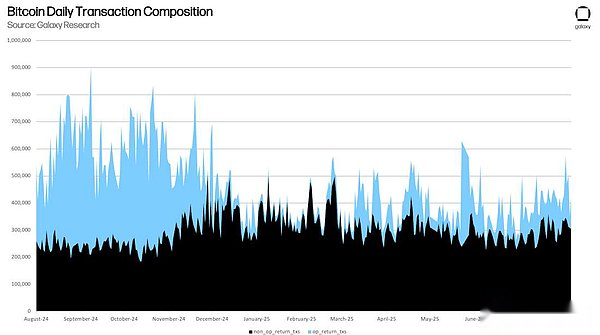
OP_RETURN is being given innovative uses.An organization named after the legendary Wall Street investment bank Salomon Brothers began using OP_RETURN to send legal notices to dormant bitcoin wallets.These on-chain messages citing the “property abandonment principle” and require the wallet owner to respond within 90 days, otherwise “Solomon” (the organization holds trademark rights but has nothing to do with Citigroup, which inherits the original investment banking business) will claim fund recourse on behalf of clients (but it is unclear how the organization controls these wallets).
Although this is an innovative practice of Bitcoin directly anchoring legal instruments, it has sparked controversy in the context of the 30.0 version update of Bitcoin Core Client.The upcoming open source software will relax the default limit on OP_RETURN data load, allowing a single transaction to include larger capacity and multiple data outputs.Critics point out that although the OP_RETURN output does not swell UTXO sets (due to its verifiable non-spendability), it still occupies block space, potentially squeezing monetary transactions and threatening the long-term sustainability of the network.The Bitcoin core development team responded to this and said that the final decision of whether to forward or package larger-scale OP_RETURN transactions is still in the hands of node operators and miners.
4, Bitcoin holdings counted by script type
Although the handling fee trend can reflect the short-term trend of Bitcoin, the UTXO set itself can better reveal the long-term distribution of BTC in the network.By classifying unspent outputs by script type (i.e. address format), we can observe the adoption of various addresses and their impact on costability, security, and quantum computing resistance.
The P2PKH (Pay-to-PubKey-Hash) format became mainstream after the early stages of Bitcoin, and currently holds a large amount of BTC (over 6 million).But new formats have gradually become popular in recent years: P2WPKH (Native Isolation Witness) launched in 2017 has become the largest holder of unspent BTC, while P2TR (Taproot) launched in 2021 is growing steadily, supporting more advanced script use cases.
The following figure shows the balance distribution of each script type as of August 11.This data also provides a basis for future discussions on security risks.
The traditional P2PK (Pay-to-PubKey) format is mainly used in early coin-creation transactions, and is essentially vulnerable to quantum computing attacks – because the format has exposed the complete public key to the chain without spending.
Other formats do not expose the public key before output is spent.But once it is spent (especially when the address is reused), the public key will also be exposed, putting these coins at similar risks.
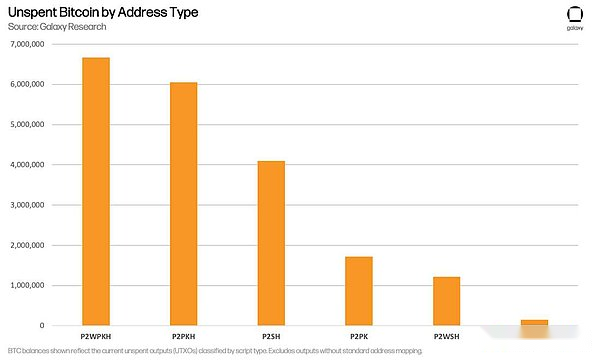
5,in conclusion
Bitcoin’s on-chain activity has entered a downturn, but network infrastructure is still evolving.
In the short term, low handling fees are beneficial to users who want to merge UTXO or transfer assets at low cost.But the long-term prospects are even more vague – the shrinking of the handling fee market has brought substantial doubts to cybersecurity.
Against the backdrop of block rewards that have been reduced to 3.125 BTC, miner incentives are increasingly dependent on fluctuations in organic demand.If more BTC transaction volume continues to flow to ETFs, custodians and high-speed competitive chains, the core network may become a clearing layer that lacks sufficient settlement activities.
With the expansion of the “Bitcoin Paper Wallet” scale and the stagnation of fee income, the Bitcoin security model is increasingly relying on a no longer guaranteed use requirement.Although the fluctuation of handling fees is not a new phenomenon, Bitcoin does require more substantial reasons to use on-chain.

